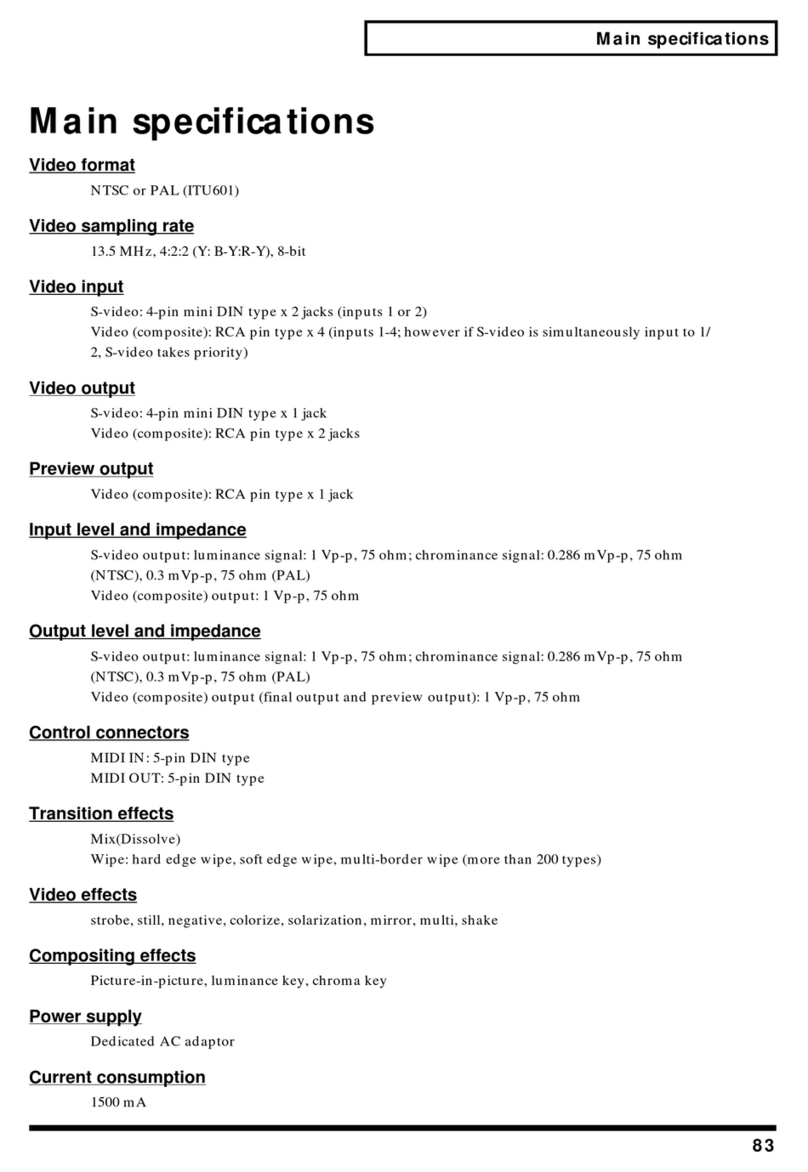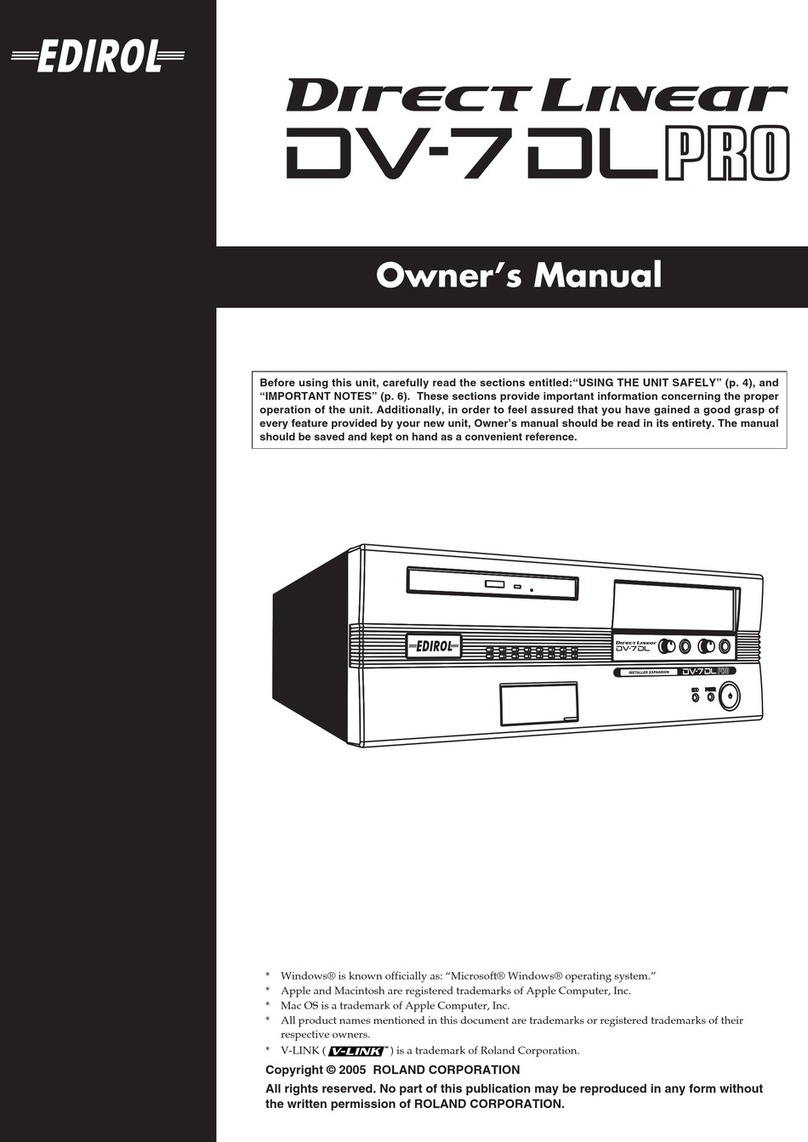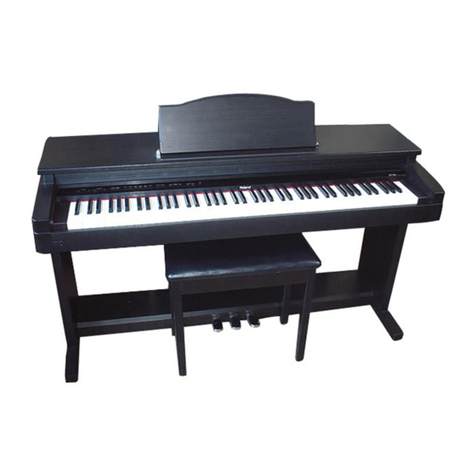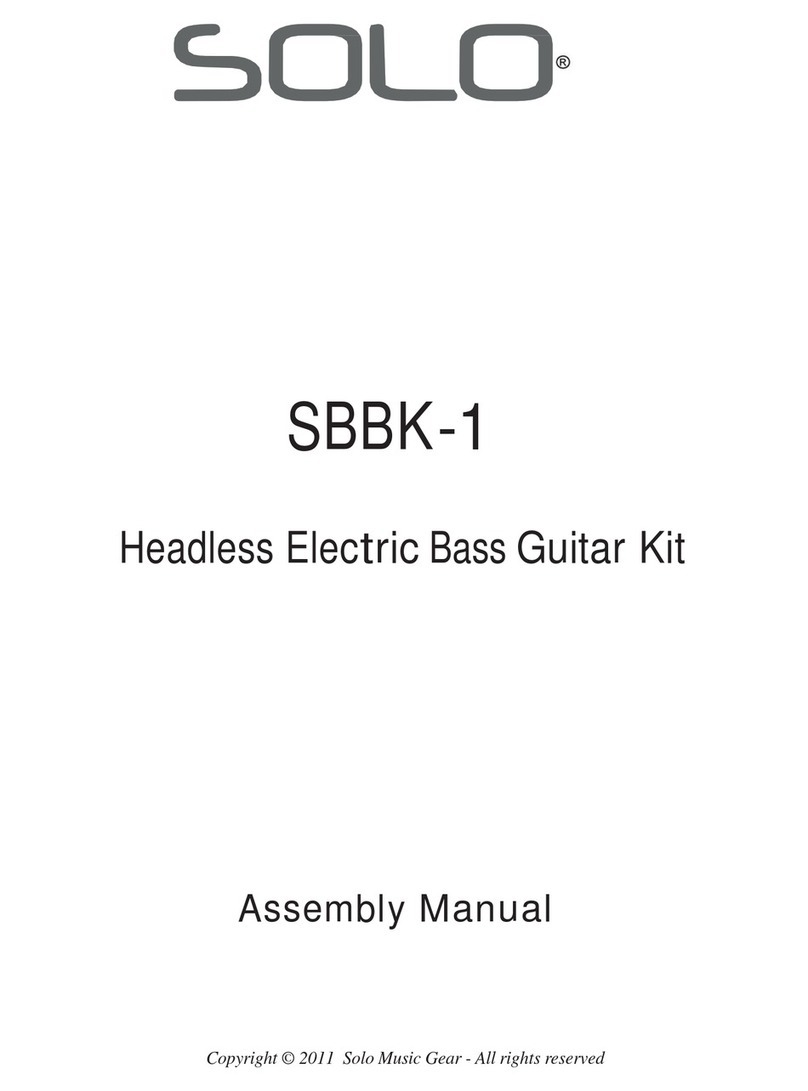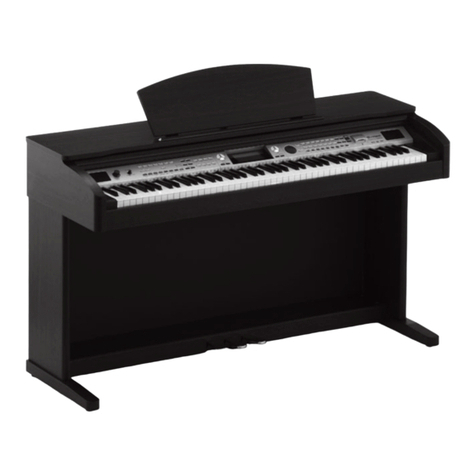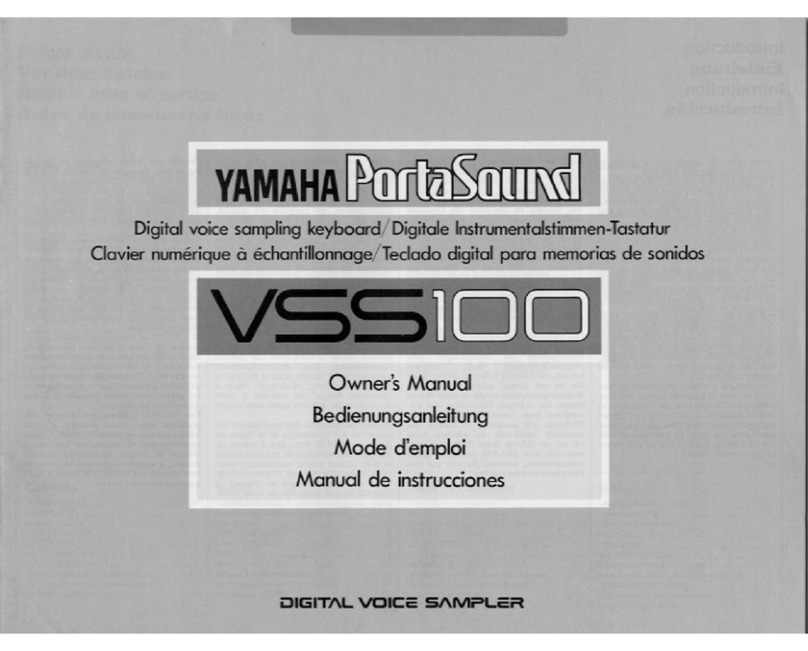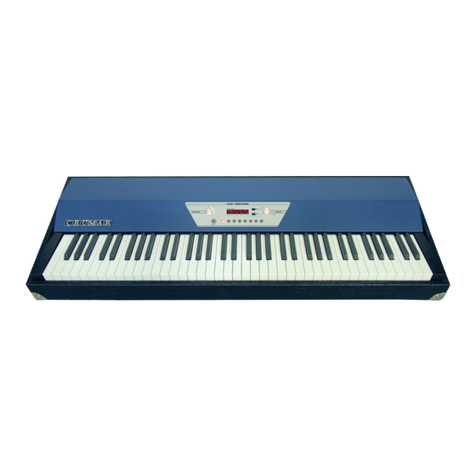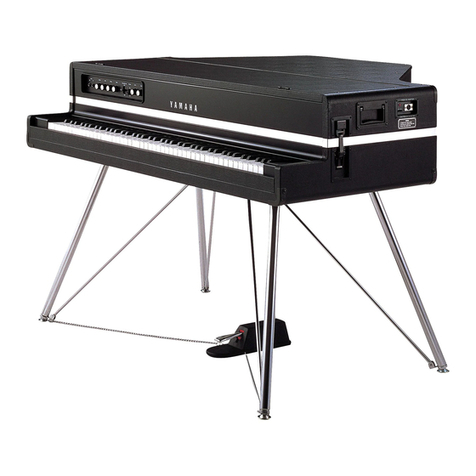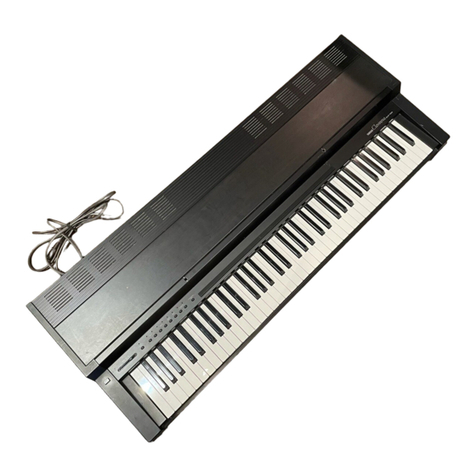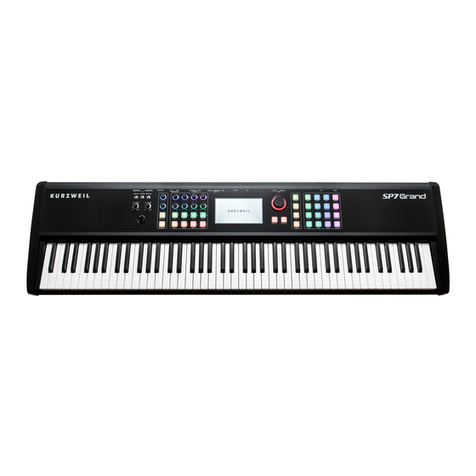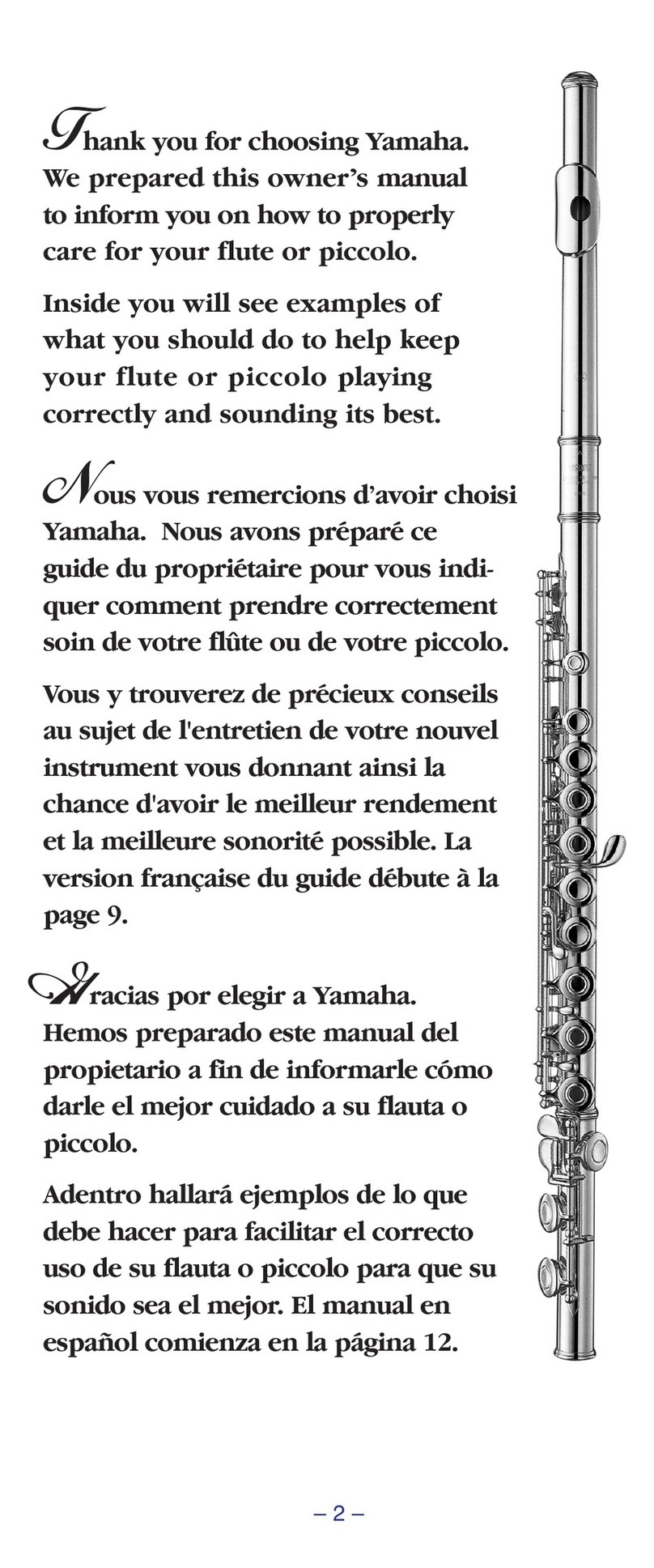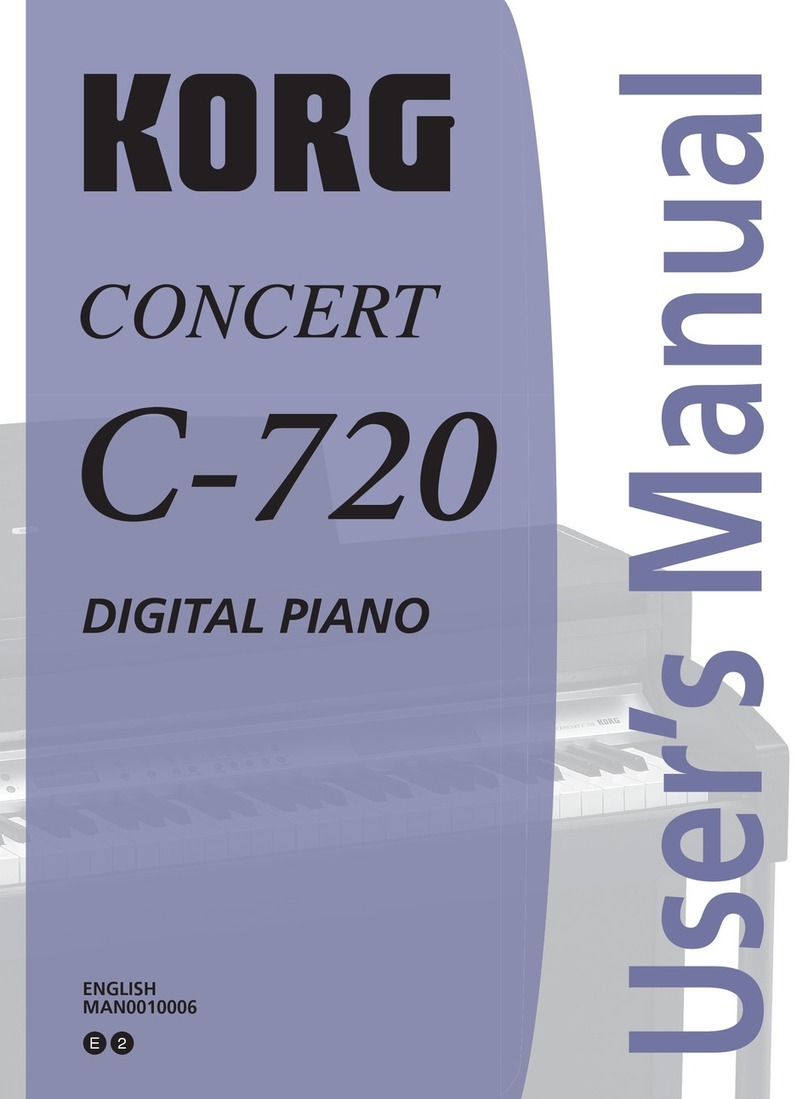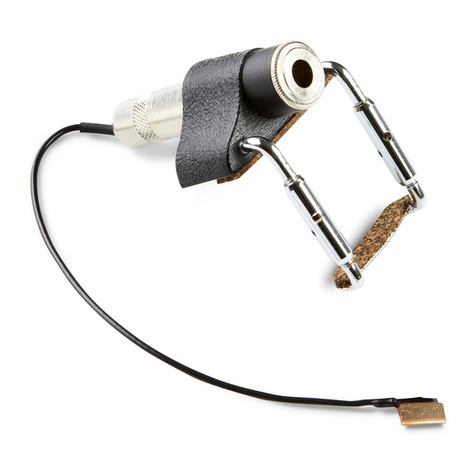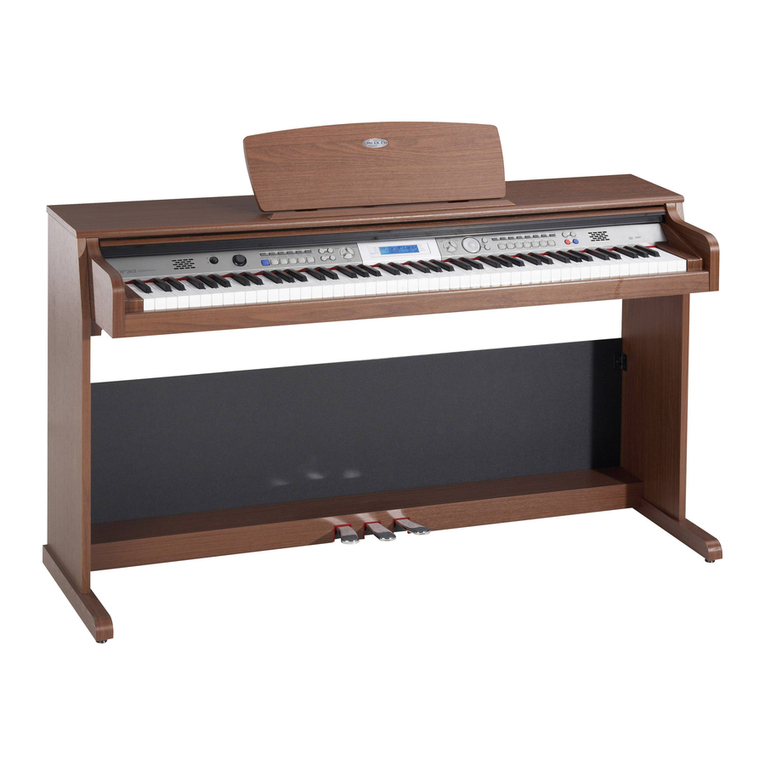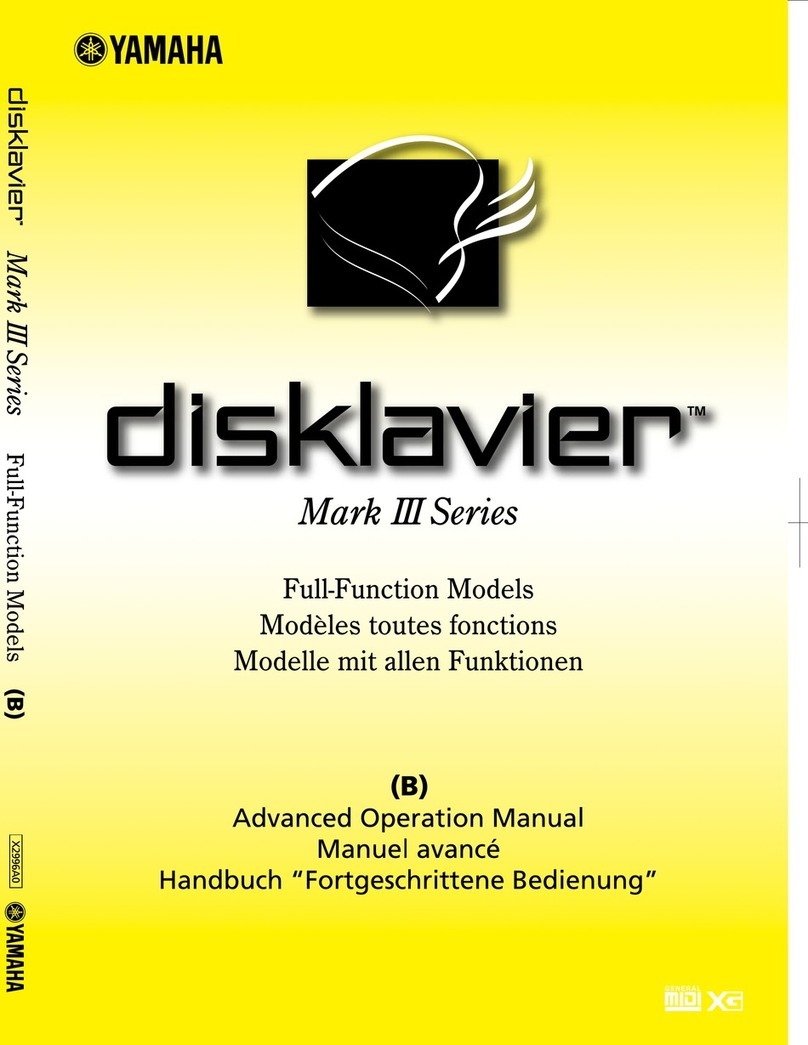Edirol Studio Canvas SD-90 User manual

Getting Started
Thank you, and congratulations on your choice of the Edirol SD-90.
Before using this unit, carefully read the sections entitled: “IMPORTANT
SAFETY INSTRUCTIONS” (Owner’s manual p. 2), “USING THE UNIT
SAFELY” (Owner’s manual p. 2, 3), and “IMPORTANT NOTES” (Owner’s
manual p. 4, 5). These sections provide important information concerning the
proper operation of the unit. Additionally, in order to feel assured that you
have gained a good grasp of every feature provided by your new unit, Owner’s
manual should be read in its entirety. The manual should be saved and kept on
hand as a convenient reference.
Copyright © 2001 ROLAND CORPORATION
All rights reserved. No part of this publication may be reproduced in any form
without the written permission of ROLAND CORPORATION.

2
What is USB?
USBstandsforUniversalSerialBus.Itisanewinterfaceusedtoconnectvariousperipheraldevices
to a computer.s
USB allows more than one peripheral device to be connected via a single USB cable, and also allows
data to be transmitted more rapidly than conventional serial ports.
Peripheralscanalsobeconnectedordisconnectedwiththepowerturnedon,andthecomputerwill
automatically recognize the peripheral that has been plugged in. (Some peripherals may require
settings or other operations to be performed.)
About SCMS
SCMS (Serial Copy Management System) is a function that protects the rights of the copyright
owner by prohibiting second-generation or later copying via a digital connection to a consumer
digital audio device such as a DAT recorder or MD recorder. When a recording is made via a digital
connection on a digital recorder that has this function, SCMS data will be recorded along with the
digital audio signal. A digital audio signal containing this SCMS data cannot be recorded again via
a digital connection.
SCMS on the SD-90
On the SD-90, SCMS will affect operation only for digital signals input from an external device. If
a digital audio signal containing SCMS data is input from a MD or other media that was digitally
copied from a commercial music CD, the SD-90 will operate as follows.
When inputting from the SD-90’s digital input connector:
• The SD-90 cannot record this signal on your computer.
• Nor will the sound be output from the analog output (master output jacks, headphone
jack) or digital output connector.
When inputting from the SD-90’s analog inputs (line in jacks):
• Recording can be performed as usual.
A note regarding copyright
* Unauthorized recording, public performance, broadcast, sale, or distribution of a work (CD recording, video,
broadcast,etc.) whose copyright is owned by athird party is forbidden by law. Anyinfringement on the rights
of a third party you may commit using the SD-90 is solely your own responsibility, and no responsibility
shall be born by the manufacturer of the SD-90. Unauthorized duplication, even for purposes of personal use,
of a copyrighted work belonging to a third party by circumventing technical means of protection such as
SCMS constitutes infringement of the copyright of that third party, and is forbidden by law.

3
Contents
Check the contents of the package........................................4
Connections with audio equipment.......................................6
Getting Connected and Installing Drivers (Windows)..........7
What is a driver? ..................................................................................................................7
Installing the driver and settings.......................................................................................7
Check whether there is sound..........................................................................................22
Getting Connected and Installing Drivers (Macintosh)......24
What is a driver? ................................................................................................................24
Installing the driver and settings.....................................................................................24
Troubleshooting.....................................................................34
Problems related to the USB driver.................................................................................34
Problems when using the SD-90......................................................................................39
Deleting the driver.............................................................................................................47
INDEX......................................................................................49
203
* GS ( ) is a registered trademark of Roland Corporation.
add
* XGlite ( ) is a registered trademark of YAMAHA Corporation.
205
* Microsoft and Windows are registered trademarks of Microsoft Corporation.
206c
* Windows® 98 is known officially as: “Microsoft® Windows® 98 operating system.”
add
* Windows® Me is known officially as: “Microsoft® Windows® Millennium Edition operating system.”
206f
* Windows® 2000 is known officially as: “Microsoft® Windows® 2000 operating system.”
207
* Apple, Macintosh and MacOS are registered trademarks of Apple Computer, Inc.
207
* OMS is a registered trademark of Opcode Systems, Inc.
220
* All product names mentioned in this document are trademarks or registered trademarks of their respective
owners.

4
Check the contents of the package
The following items are included in the SD-90 package. After opening the
package,checktoseewhetheranyitemsare missing. If any items are missing,
please contact the dealer from whom you purchased the SD-90.
* The SD-90 package does not include an external amp or speakers, headphones, or
audio cables. You will need to provide these separately.
fig.sd-90_panel
❏
SD-90
This is a
Studio Canvas
unit with digital input/
output jacks and USB audio
interface.
It supports
General MIDI 2
,
GS format
(the universal
specification for Roland
sound generators), and the
XGlite
promoted by
Yamaha Corporation.
fig.0-3
❏
AC cord
This is the only AC cord you should use with
the SD-90.
Do not use any AC cord other than the
supplied one, since doing so may cause
malfunction.
fig.0-5
❏
CD-ROM
This contains drivers used by the SD-90, and demo songs.
fig.0-6a
DO NOT play a CD-ROM disc on a conventional audio CD player.
The resulting sound may be of a level that could cause permanent
hearing loss. Damage to speakers or other system components may
result.
fig.0-7
❏
USB cable
This connects the SD-90 to your computer.
You may want to mark the
relevant check box as you
confirm the presence of
each item.
For details on General
MIDI 2, GS format, and
XGlite, please refer to the
SD-90 owner’s manual.
Avoid touching or
scratching the shiny
underside (encoded
surface) of the disc.
Damaged or dirty CD-
ROM discs may not be
read properly. Keep your
discs clean using a
commercially available CD
cleaner.

5
Check the contents of the package
fig.0-10e_30
Getting Started
This is the manual you are holding. Please read
this first.
This manual explains how to install the drivers
and make the settings required in order to use the
SD-90. Starting at the beginning, please read the
sections that are relevant to your system.
fig.0-14e_30
❏
Owner’s Manual
This is the owner’s manual for the SD-90.
Read this to gain in-depth information
concerning the use of the SD-90, and the
numerous functions it offers.
Getting Started
Thank you, and congratulations on your choice of the Edirol SD-90
Before using this unit, carefully read the sections entitled: “IMPORTANT
SAFETY INSTRUCTIONS”(Owner’s manual p. 2), “USING THE UNIT
SAFELY”(Owner’s manual p. 2, 3), and “IMPORTANT NOTES”(Owner’s
manual p. 4, 5). These sections provide important information concerning the
proper operation of the unit. Additionally, in order to feel assured that you
have gained a good grasp of every feature provided by your new unit, Owner’s
manual should be read in its entirety. The manual should be saved and kept on
hand as a convenient reference.
Copyright © 2001 ROLAND CORPORATION
All rights reserved. No part of this publication may be reproduced in any form
without the written permission of ROLAND CORPORATION.
Owner's Manual
Thank you, and congratulations on your choice of the Edirol SD-90
Before using this unit, carefully read the sections entitled: “IMPORTANT
SAFETY INSTRUCTIONS”(Owner’s manual p. 2), “USING THE UNIT
SAFELY”(Owner’s manual p. 2, 3), and “IMPORTANT NOTES”(Owner’s
manual p. 4, 5). These sections provide important information concerning the
proper operation of the unit. Additionally, in order to feel assured that you
have gained a good grasp of every feature provided by your new unit, Owner’s
manual should be read in its entirety. The manual should be saved and kept on
hand as a convenient reference.
Copyright © 2001 ROLAND CORPORATION
All rights reserved. No part of this publication may be reproduced in any form
without the written permission of ROLAND CORPORATION.

6
Connections with audio
equipment
Connect the audio outputs (analog) of the SD-90 to your audio playback equipment. You will need
the following items.
•SD-90
•Audio cables (RCA phono - RCA phono)
•Audio playback equipment such as an amp and speakers, or a stereo system
1
Lower the volume of your audio playback equipment.
2
Connect the SD-90’s
OUTPUT1 (audio output 1) jacks
to the input jacks of your audio playback
equipment. If you are using headphones, connect them to the
headphone jack
located on the
front panel of the SD-90.
fig.8-1e
* Before making connections to other equipment, you must turn down the volume of all equipment to avoid
malfunctions or speaker damage.
* To avoid short circuits or broken connections, grasp the plug when disconnecting a cable.
* Use the included cables to make connections. If you are using a connection cable made by another
manufacturer, please note the following.
• Some connection cables contain a resistor. Do not use a cable with a built-in resistor to connect
with the SD-90. Doing so may make the sound extremely weak, or inaudible. For details on your
cable, please contact its manufacturer.

7
Getting Connected and Installing
Drivers (Windows)
If you are using a Macintosh computer, please proceed to
Getting Connected and Installing
Drivers (Macintosh)
(p. 24).
The following items are required for connections and installation. Remove them from the SD-90
package, and have them ready.
•SD-90
•AC cord
•USB cable
•CD-ROM
What is a driver?
fig.05-1e_50
A “driver”is software that
transfers data between the SD-90
and application software running
on your computer, when your
computer and the SD-90 are
connected by a USB cable. The
driver sends data from your
application to the SD-90, and from
the SD-90 to your application.
Installing the driver and settings
■
Windows 2000 users
WDM driver and MME driver
The CD-ROM contains two types of driver for Windows 2000.
Before you install the driver, select the driver that will be appropriate for the application you want
to use.
WDM driver
You should use this driver if you have specified WDM driver mode for SONAR or a similar
application. This will provide the highest-quality audio performance.
* It is not possible to use 24-bit audio with applications that do not have a WDM driver mode, such as Cool
Edit or Media Player.
The installation procedure will differ depending on your system.
Please proceed to one of the following sections, depending on the system you use.
•Windows 2000 users.................................. (p. 7)
•Windows Me/98 users.............................. (p. 16)

8
Getting Connected and Installing Drivers (Windows)
MME driver
This driver allows you to use 24-bit audio even from applications that do not have a WDM driver
mode, such as Cool Edit.
* It is not possible to use the MME driver from WDM driver mode of an application such as SONAR.
It is not possible to install both the WDM driver and the MME driver. You must select one
beforehand, and install only that driver. If after installing one of these drivers you decide to change
drivers, you must first delete the already-installed driver and then install the new driver.
(->Deleting the driver (p. 47))

9
Getting Connected and Installing Drivers (Windows)
Installing the driver
The WDM driver and the MME driver can be installed using the same
procedure.
1
With the SD-90 disconnected, start up Windows.
Disconnect all USB cables except for a USB keyboard and USB mouse (if
used).
2
Log on to Windows as a
user with administrative privileges
(such as
Administrator).
3
Open the
System Properties
dialog box.
Click the Windows
Start
button, and from the menu that appears, select
Settings | Control Panel
. In
Control Panel
, double-click the
System
icon.
fig.05-2e_30
4
Open the
Driver Signature Options
dialog
box.
Click the
Hardware
tab, and then click
[Driver
Signing]
.
fig.05-3e_30
5
Make sure that “
File signature verification
”
is set to “
Ignore
.”
If it is set to “
Ignore
”, simply click
[OK]
.
If it is not set to “
Ignore
”, make a note of the
current setting (“
Warn
”or “
Block
”). Then
change the setting to “
Ignore
”and click
[OK]
.
6
Close the
System Properties
dialog box.
Click
[OK]
.
7
Exit all currently running software (applications).
Also close any open windows. If you are using virus checking or similar
software, be sure to exit it as well.
8
Prepare the CD-ROM.
Insert the CD-ROM into the CD-ROM drive of your computer.
If you have already
connected the SD-90 to
your computer and the
“Add new hardware
wizard”is displayed, find
the Readme_e.htm file in
the Driver\Win2000\WDM
or Driver\Win2000\MME
folder of the CD-ROM, and
under “Troubleshooting,”
read the section entitled
“You attempted to install
using the above
procedure, but were not
able to.”
If you changed “File
signature verification” in
step 5, you must restore the
previous setting after you
have installed the driver.
(->If you changed “File
signature verification” (p.
12))

10
Getting Connected and Installing Drivers (Windows)
fig.05-4e_30
9
Open the “
Run...
”dialog box.
Click the Windows
Start
button.
From the menu that appears, select “
Run...
”
fig.05-5e_30
10
In the dialog box that appears, input the following
into the “
Open
”field, and click
[OK]
.
If installing the WDM driver
D:\Driver\Win2000\WDM\Setupinf.exe
If installing the MME driver
D:\Driver\Win2000\MME\Setupinf.exe
fig.05-6e_30
11
The
SETUPINF
dialog box will appear.
You are now ready to install the driver.
Drag the title bar to move the
SETUPINF
dialog box into the upper part of the screen.
* Do not click
[OK]
at this time.
12
With the power turned off, use a USB cable
to connect the SD-90 to your computer.
13
Set the SD-90’s mode select switch to the ON position.
Connect the AC cord to the SD-90’s AC IN, and connect the plug of the AC
cord to an electrical outlet.
In this manual, the location
of folders and files is given
in terms of the file path,
using \as the delimiter.
For example,
WDM\Setupinf.exe
indicates the Setupinf.exe
file found in the WDM
folder
The drive name “D:”may
b
e different for your
system. Specify the drive
name of your CD-ROM
drive.
If a message of
“The driver is already
installed”appears, you
can connect the SD-90 to
your computer and use it.
If in step 5 the “File signature verification”setting was not set to “Ignore”,
a “Digital signature not found”dialog box will appear.
fig.05-7e_30
If “File signature verification” is set to “Warn,”
1. Click [Yes].
2. Continue the installation.
If “File signature verification” is set to “Block”
1. Click [OK].
2. When the “New hardware detection wizard”appears, click [Finish].
3. Perform the installation as described in the “Troubleshooting”section on
Device Manager shows “?”, “!”, or “USB Composite Device” (p. 37).

11
Getting Connected and Installing Drivers (Windows)
fig.05-8e_30
14The Insert disk dialog box will appear.
Click [OK].
fig.05-9e_30
15The Files Needed dialog box will
appear.
In the Copy files from field, type the
folder name that is shown in the
Setupinf dialog box, and click [OK].
fig.05-10e_30
16The “Found New Hardware Wizard”
may be displayed.
Verifythat“EDIROLSD-90(WDM)”or
“EDIROL SD-90 (MME)” is displayed,
and click [Finish].
If the “Find new hardware wizard”
dialog box is not displayed, proceed to
step 17.
fig.05-11e_30
17Restart Windows.
The System Settings Change dialog
box may appear. Click [Yes]. Windows
will restart automatically.
If the System Settings Change dialog
box does not appear, restart Windows from the Start menu.
If the Insert disk dialog
b
ox does not appear,
please read The The
“Insert Disk” dialog box
does not appear (p. 37)
If in step 5 the “File signature verification”setting was not set to “Ignore”,
a “Digital signature not found”dialog box will appear.
fig.05-7e_30
If “File signature verification” is set to “Warn,”
1. Click [Yes].
2. Continue the installation.
If “File signature verification” is set to “Block”
1. Click [OK].
2. When the “New hardware detection wizard” appears, click [Finish].
3. Perform the installation as described in the “Troubleshooting”section on
Device Manager shows “?”, “!”, or “USB Composite Device” (p. 37).

12
Getting Connected and Installing Drivers (Windows)
If you changed “File signature verification”
If you changed the “File signature verification” setting in step 5, restore the
original setting after Windows restarts.
1. After Windows restarts, log in to Windows as a user with
administrative privileges, (such as Administrator).
2. In the Windows desktop, right-click the My Computer icon, and from
the menu that appears, select Properties. The System Properties
dialog box will appear.
3. Click the Hardware tab, and then click [Driver signature]. The Driver
signature options dialog box will appear.
4. Return the “File signature verification” setting to the original setting
(either “Warn” or “Block”), and click [OK].
5. Click [OK]. The System properties dialog box will close.
Next, specify the audio and MIDI input and output destinations.
(-> Audio and MIDI input and output destinations (p. 13)

13
Getting Connected and Installing Drivers (Windows)
Audio and MIDI input and output destinations
In order to perform the following steps, you must log on and make settings
as the same user who will be actually using the SD-90 (a user with
administrative privileges, such as Administrator).
fig.017-01e_30
1Open Control Panel.
Click the Windows Start button, and
select Settings - Control Panel.
fig.017-02e
2Open the Sounds and Multimedia Properties dialog
box.
Double-click the Sounds and Multimedia icon.
fig.12-20ae
3Specify the “Preferred device.”Click
the Audio tab. Click the Sound
playback field, Sound Recording field,
and MIDI Music Playback field, and
make the following selections from the
list that appears.
4Close the Sound and Multimedia
Properties dialog box.
Click [OK].
Sound
Playback EDIROL SD-90 Out
Sound
Recording EDIROL SD-90 In
MIDIMusic
Playback EDIROL SD-90 PART A
Next, you need to specify the hard disk transfer mode.
(-> Specifying the hard disk transfer mode (p. 14)

14
Getting Connected and Installing Drivers (Windows)
Specifying the hard disk transfer mode
1Click the Windows Start button, and from the menu that appears, choose
Settings | Control Panel. The Control Panel will appear.
2Double-click the System icon. The System Properties dialog box will
appear.
3Click the Hardware tab.
4Click Device Manager located at the right of the Device Manager field.
fig.5-05e
5In the list that appears, double-click IDE
ATA/ATAPI controller.
6Double-click Primary IDE Channel.
The Primary IDE Channel Properties
dialog box will appear.
7Click the Advanced Settings tab.
fig.5-06e
8Check whether the Current Transfer
Mode for Device 0 and Device 1 is
UltraDMA mode (or DMA mode).
If the current transfer mode is
UltraDMA mode (or DMA mode),
proceed to step 10.
If it is PIO mode, select DMAif available
from the pulldown menu of Transfer
Modes.
9Click [OK]. If a dialog box appears, recommending that you restart your
computer, click [Yes]. The computer will restart automatically.
10Click the button of the Device Manager.

15
Getting Connected and Installing Drivers (Windows)
11In the System Properties dialog box, click [Close] (or [OK]). The System
Properties dialog box will close. If the current transfer
mode was already set to
UltraDMA mode in step 8,
click [OK] in step 11.
Next, you need to check whether the connections, driver installation, and
settings were made correctly.
(->Check whether there is sound (p. 22)

16
Getting Connected and Installing Drivers (Windows)
■Windows Me/98 users
Installing the driver
1With the SD-90 disconnected, start up Windows.
Disconnect all USB cables other than those for a USB keyboard or USB mouse.
2Exit all currently running software (applications).
Also, close any open windows. If you are using a virus checker or similar
software, be sure to exit this as well.
3Prepare the CD-ROM.
Insert the CD-ROM into the CD-ROM drive of your computer.
fig.05-12e_30
4Open the Run... dialog box.
Click the Windows Start button. From the menu that
appears, select Run....
fig.05-13e_30
5In the “Open”field of the dialog box that
appears, type
“D:\Driver\Win98Me\Setupinf.exe”and
click [OK].
fig.05-14e_30
6Open the SETUPINF dialog box.
You are now ready to install the driver.
Drag the title bar to move the SETUPINF
dialog box into the upper part of the
screen.
* Do not click [OK] at this time.
7With the power turned off, use a USB cable to connect the SD-90 to your
computer.
8Turn on the power of the SD-90.
Connect the AC cord to the SD-90’s AC IN jack, and insert the AC cord’s plug
into an AC power outlet. Then, turn on the power of the SD-90.
If the SD-90 is already
connected to your computer
and a message of “Add New
Hardware Wizard”is
displayed, go to the CD-
ROM folder named
Driver\Win98Me, open the
file Readme_e.htm, and
readthe “Troubleshooting”
section entitled “You
attempted to install using
the above procedure, but
were notable to.”
In this manual, the location
of folders and files is given
in terms of the file path,
using \ as the delimiter.
For example,
Win98Me\Setupinf.exe
indicates that the
Setupinf.exe file is located
in the Win98Me folder.
The drive name “D:”may
b
e different depending on
your system. Type the
name of your CD-ROM
drive.
If a message of
“The driver is already
installed”appears, you
can connect the SD-90 to
your computer and use it.
This unit is equipped with
a protection circuit. A brief
interval (a few seconds)
after power up is required
b
efore the unit will operate
normally.

17
Getting Connected and Installing Drivers (Windows)
fig.05-15e_30
9If you are using Windows 98, an
Insert disk dialog box will appear.
Click [OK].
10The New Hardware dialog box will appear.
In the File copy source field, type the folder name that is shown in the
SETUPINF dialog box, and click [OK].
fig.05-16e
fig.05-16ae
11Once the driver has been installed, the New hardware dialog box will close.
In the SETUPINF dialog box, click [OK]. The SETUPINF dialog box will close.
If you are using Windows
98 and the Insert disk
dialog box dose not
appear, please read The
“Insert Disk” dialog box
does not appear (p. 37)
If the New Hardware
dialog box does not
appear, re-install the
driver using the same
procedure as described in
The “Insert Disk” dialog
box does not appear (p.
37)
Next, specify the audio and MIDI input and output destinations.
(-> Audio and MIDI input and output destinations (p. 18)

18
Getting Connected and Installing Drivers (Windows)
Audio and MIDI input and output destinations
●Windows Me users
If you are using a Windows 98, please proceed to page 19.
fig.me-011
1Open Control Panel.
Click the Windows Start button,
and select Settings - Control Panel.
fig.12-19e
2Open the Sounds and Multimedia Properties dialog
box.
Double-click the Sounds and Multimedia icon.
fig.12-20e
3Specify the “Preferred device.”Click
the Audio tab. Click the Sound
Playbackfield, Sound Recording field,
and MIDI Music Playback field, and
make the following selections from the
list that appears.
4Close the Sound and Multimedia
Properties dialog box.
Click [OK].
Sound
Playback EDIROL SD-90 Out
Sound
Recording EDIROL SD-90 In
MIDI Music
Playback EDIROL SD-90 PART A
Depending on your
system, the Sound and
Multimedia icon may not
b
e displayed in the Control
Panel. In this case, click the
text “Show all Control
Panel options”located in
the left of the Control
Panel.
Next you will specify the hard disk transfer mode.
(->Specifying the hard disk transfer mode (p. 20)

19
Getting Connected and Installing Drivers (Windows)
●Windows 98 users
fig.13-201e
1Open Control Panel.
Click the Windows Start button, and select
Settings - Control Panel.
fig.13-202e
2Open the Multimedia Properties dialog box.
Double-click the Multimedia icon.
fig.12-09
3Specify the “Preferred device.”Click the
Audio tab. Click the Playback field and
Recording field, make the following
selections from the list that appears, and click
[Apply].
fig.12-10
4Specify the “MIDI output.”
Click the MIDI tab. Add a check mark to
[Single instrument], click [EDIROL SD-90
PART A] in the list, and then click [Apply] (or
[OK]).
5Close the Multimedia Properties dialog box.
Click [OK].
Playback EDIROL SD-90 Out
Recording EDIROL SD-90 In
Depending on your
system, the Sound and
Multimedia icon may not
b
e displayed in the Control
Panel. In this case, click the
text “Show all Control
Panel options”located in
the left of the Control
Panel.
Next you will specify the hard disk transfer mode.
(-> Specifying the hard disk transfer mode (p. 20)

20
Getting Connected and Installing Drivers (Windows)
Specifying the hard disk transfer mode
1Click the Windows Start button, and from the menu that appears, choose
Settings | Control Panel. The Control Panel will appear.
2Double-click the System icon. The System Properties dialog box will
appear.
3Click the Device Manager tab.
4Double-click the Disk drives in the list. A list of the connected disk drives
will appear.
fig.DMA1
5Double-click the hard disk drive
that you are using (example:
GENERIC IDE DISKTYPE47). The
hard disk properties dialog box
will appear.
6Click the Settings tab.
fig.DMA2
7Verify whether the DMA option
has a check mark. If it has a check
mark, click [Cancel], and proceed
to step 10. If it does not have a
check mark, check DMA.
8If the unsupported hardware
warning dialog box appears, click
[OK].
9Click [OK].
The hard disk properties dialog
box will close.
DMA
DMA is an abbreviation
for Direct Memory Access.
It is a transfer method
used to exchange audio
data between your
sequencer program and
the SD-90 (the audio
device).
Other manuals for Studio Canvas SD-90
1
Table of contents
Other Edirol Musical Instrument manuals
